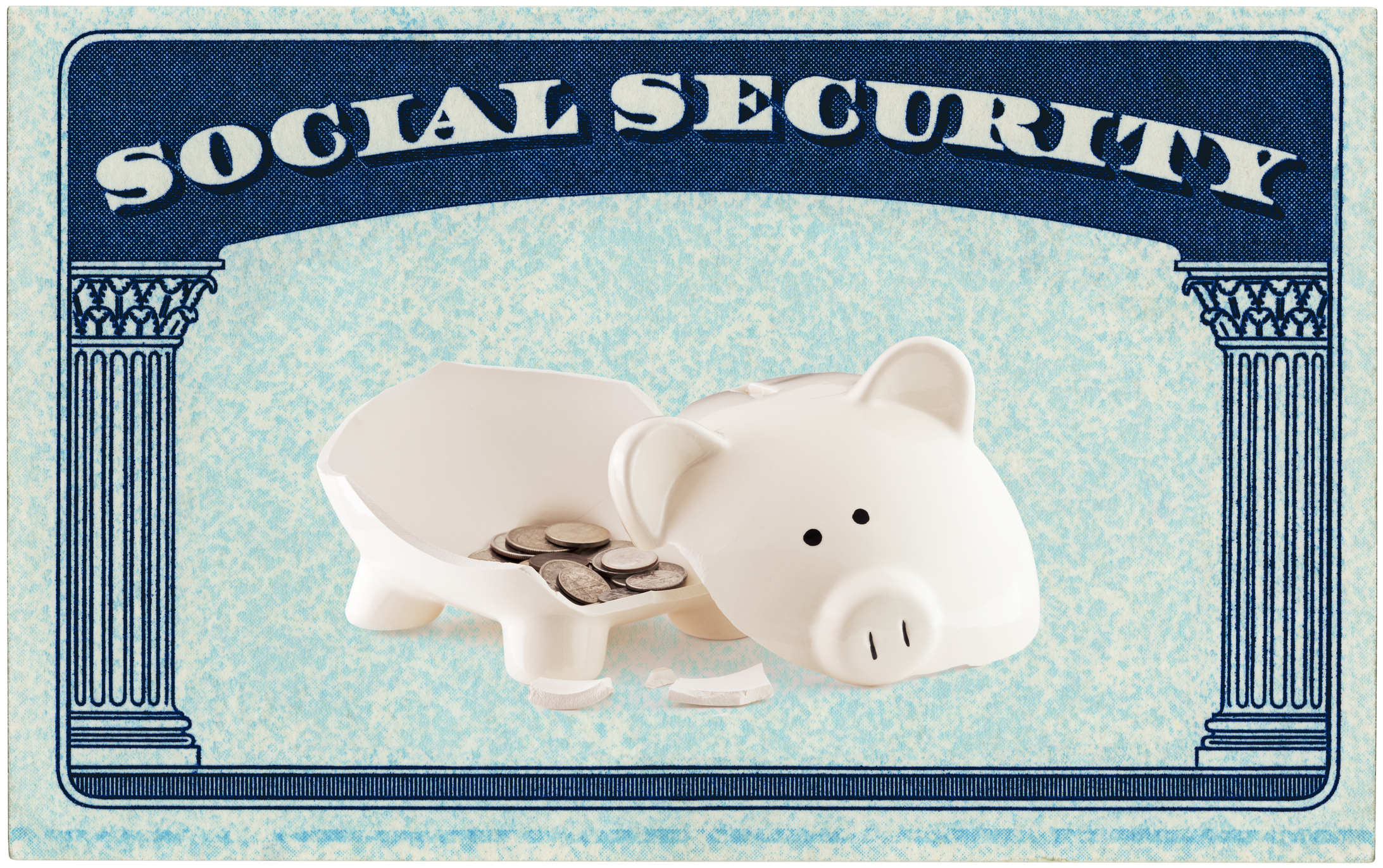6 Ways to Avoid Outliving Your Retirement Savings Before You Die
It may be the biggest worry of retirement: How do you ensure that you don’t run out of cash before you run out of breath?


It may be the biggest worry of retirement: How do you ensure that you don’t run out of cash before you run out of breath? The easy answer is to save early and often and build up an impregnable stockpile of cash. If you’ve missed that memo, however, you can still vastly increase the chance that your nest egg will last at least as long as you do by taking these six steps.

1. Make a Plan
Just 48% of Americans have attempted to figure out how much money they should be saving for retirement, according to a 2015 survey by the Employee Benefit Research Institute. Notably, the study found that those who have tried to calculate their retirement needs have more savings and greater confidence in their retirement readiness than those who have neglected to make a plan.
- To set your saving target, start by estimating how much income you’ll need to replace in retirement (one rule of thumb is 80% of your working income). Factor in how much you spend and save now and which expenses will go up or down or evaporate altogether once you retire. If you plan to pay off your mortgage before retirement, for example, subtract that cost from your projected spending. Include the amount you spend on property taxes and homeowners insurance as well as such basics as food, clothing and entertainment. Keep in mind that you may spend less in some categories, such as dry cleaning and eating out, and more on hobbies and recreation, including travel.
- SEE ALSO: The Worst States for Retirement
Next, calculate how much you’ll have coming in from fixed sources of income, such as Social Security and pensions. If you expect a pension, ask your employer what the amount will be. For an estimate of your Social Security benefits, click on “check your information or benefits” under the “benefits” tab at www.ssa.gov, or use the Retirement Estimator on the site’s home page. Any gap between expenses and income will have to be filled by savings. To get an idea of how much you’ll need over a 25- or 30-year retirement, plug your data into a retirement savings calculator. One easy-to-use tool is the Kiplinger Retirement Savings Calculator.

2. Follow the Modified 4% Rule
If you withdraw no more than 4% of your assets in the first year of retirement and adjust your withdrawals for inflation annually thereafter, your assets should last as long as you do, according to a longstanding benchmark.
One caveat: If you experience big investment losses early in the game, the chance of running out of money soars unless you adjust your withdrawal rate. “It’s not a set-it and forget-it thing,” says Judith Ward, senior financial planner at T. Rowe Price. “You have to revisit your withdrawal rate every year.” The adjustment doesn’t need to be drastic, she says. Simply forgoing the inflation adjustment in tough years can make a difference. The good news is that if investment returns are better than expected in any given year, you can adjust upward, too.

3. Work a Little Longer
Every extra year you stay on the job can add as much as three years to your retirement readiness.
Why? First, for every year you work, you’re preserving the savings you would otherwise be using to cover living expenses. Second, working longer can help you delay taking Social Security—and for every year you delay after full retirement age (currently 66), you get an 8% boost in benefits, up to age 70. (Delaying taking your pension beyond the date you’re eligible may also boost your pension payment.) Third, you can kick more money into your retirement plan while you work that extra year, and investment returns will continue to build. To improve retirement readiness, “working longer is one of the most significant things you can do,” says Ward.
- SEE ALSO: 6 Reasons to Work Past Retirement Age

4. Protect Against Long-Term-Care Costs
You’ve probably heard that long-term-care expenses can be overwhelming, with the median cost of a nursing home running roughly $80,000 annually, according to Genworth Financial.
That’s not a cost the average middle-income family can easily shoulder, and it bolsters the argument for buying some insurance. But long-term-care policies are costly and have restrictions on their use. The best bet is to buy coverage that would defray catastrophic long-term-care costs, such as a prolonged stay in a nursing home, and attempt to self-insure—by earmarking a portion of your savings—for help with incidentals such as shopping and other errands, which the policies typically don’t cover. For the coverage you do buy, look to cut costs by reducing the inflation adjustment from, say, 5% to 3%, shortening the benefit period or extending the period before coverage kicks in.
Meanwhile, note that about 80% of the people needing long-term care in the United States live in private homes, receiving the bulk of the help through unpaid assistance from friends and family, according to a report by the Congressional Budget Office. Be good to those people. They may save you a fortune.

5. Buy an Annuity
For another fixed, guaranteed source of income, consider using some of your savings to buy an immediate annuity.
Monthly payments are based on your age (the older you are when you buy, the bigger the payout) and interest rates when you buy. So if you buy an annuity when you’re relatively young or when interest rates are at historically low levels, as they are now, you lock in a low monthly payment for life. Currently, a husband and wife who are both 65 and who pay a single $100,000 premium would lock in a $480 monthly payment for the rest of their lives.
To boost the payout, you could stagger your annuity purchases over several years, taking advantage of potentially higher interest rates as well as the higher payouts owing to your older age, or go with a deferred income annuity, in which you pay the premium but defer the payout for several years. The longer you defer, the higher the annual payout.
Be aware that generally if you buy an annuity and are run over by a truck a month later, no residual goes to your heirs. Plus, few annuities are inflation adjusted, so the set monthly payment provides less buying power over time. That said, if you want to use just a portion of your savings to lock in a set monthly payment for life to, say, make sure you always have a fixed source of income to pay a fixed expense, such as your mortgage, an annuity can be a great tool.
- SEE ALSO: Choose an Annuity to Fit Your Needs

6. Use Your Home Equity
Reverse mortgages have gotten a bad rap for two good reasons. One, they have been used as a last resort by very elderly retirees who are running short of cash, resulting in upfront fees and charges that are excessive for what ends up being a short-term loan. More significantly, some charlatans have encouraged elderly clients to take out reverse mortgages and invest the cash in questionable deals that end up losing the senior’s last asset—his or her home equity.
- In the right circumstances, however, a reverse mortgage can be a huge benefit, says Anthony Webb, senior research economist at the Center for Retirement Research. These loans, guaranteed by the federal government, allow seniors age 62 and older to tap their home equity while remaining in their home; the loan is repaid when they move, sell the house or die. If there’s equity left in the home, the owner or heirs can sell the house and repay the loan, keeping the remainder. If there’s no equity left, they hand the bank the keys.

6. Use Your Home Equity Part II -- How It Works
Reverse mortgages are complicated and can be expensive. For instance, on a loan of roughly $250,000, up-front fees can run well over $10,000. Costs include an insurance premium of 0.5% of the loan amount, or 2.5% if you take more than 60% of the proceeds during the first year; you also pay an annual insurance premium of 1.25% of the loan for as long as you have it.
You can take the money as a lump sum, which causes interest charges to accrue on the entire balance immediately; as a line of credit, where you pay interest charges based on when and how much you tap; or as a monthly annuity for the rest of your life. Or you can combine two of these options, getting a small lump sum up front and tapping the remaining balance either as needed or monthly.
To qualify for the loan, you must show that you can pay the property tax and keep homeowner’s insurance current; otherwise, you will be required to set aside part of the loan in an escrow account to cover those costs. And you’re limited to how much of the proceeds you can take in the first year (generally, no more than 60% of the amount you are eligible to receive). That restriction protects borrowers from using up all of the money in the early years of the loan.
- Despite the costs and complexities, the loans can be ideal for retirees who find themselves house-rich but cash-poor. Consider a hypothetical individual we’ll call John, who is laid off at 62 from a job paying $80,000 a year. He figures he’ll need 80% of his working income, or $5,333 a month, to live on. Between his Social Security benefit (which is reduced 25% to 30% if you claim at 62, the earliest you are eligible, compared with your benefit at full retirement age) and distributions from his retirement savings, he will have only about $4,300 a month, $1,000 a month short of what he needs. By using cash from a reverse mortgage to fill the income gap, he could delay taking Social Security until age 70, at which point his benefit would be 76% higher than at 62. That increased benefit would enable him to live comfortably even if he taps out the money he raised in the reverse mortgage. (To find out how a reverse mortgage could work for you, try this online calculator.)
Profit and prosper with the best of Kiplinger's advice on investing, taxes, retirement, personal finance and much more. Delivered daily. Enter your email in the box and click Sign Me Up.

-
 Dow, S&P 500 Rise to New Closing Highs: Stock Market Today
Dow, S&P 500 Rise to New Closing Highs: Stock Market TodayWill President Donald Trump match his Monroe Doctrine gambit with a new Marshall Plan for Venezuela?
-
 States That Tax Social Security Benefits in 2026
States That Tax Social Security Benefits in 2026Retirement Tax Not all retirees who live in states that tax Social Security benefits have to pay state income taxes. Will your benefits be taxed?
-
 QUIZ: What Type Of Retirement Spender Are You?
QUIZ: What Type Of Retirement Spender Are You?Quiz What is your retirement spending style? Find out with this quick quiz.
-
 States That Tax Social Security Benefits in 2026
States That Tax Social Security Benefits in 2026Retirement Tax Not all retirees who live in states that tax Social Security benefits have to pay state income taxes. Will your benefits be taxed?
-
 What to Do With Your Tax Refund: 6 Ways to Bring Growth
What to Do With Your Tax Refund: 6 Ways to Bring GrowthUse your 2024 tax refund to boost short-term or long-term financial goals by putting it in one of these six places.
-
 What Does Medicare Not Cover? Eight Things You Should Know
What Does Medicare Not Cover? Eight Things You Should KnowMedicare Part A and Part B leave gaps in your healthcare coverage. But Medicare Advantage has problems, too.
-
 12 Great Places to Retire in the Midwest
12 Great Places to Retire in the MidwestPlaces to live Here are our retirement picks in the 12 midwestern states.
-
 15 Cheapest Small Towns to Live In
15 Cheapest Small Towns to Live InThe cheapest small towns might not be for everyone, but their charms can make them the best places to live for plenty of folks.
-
 15 Reasons You'll Regret an RV in Retirement
15 Reasons You'll Regret an RV in RetirementMaking Your Money Last Here's why you might regret an RV in retirement. RV-savvy retirees talk about the downsides of spending retirement in a motorhome, travel trailer, fifth wheel, or other recreational vehicle.
-
 The 24 Cheapest Places To Retire in the US
The 24 Cheapest Places To Retire in the USWhen you're trying to balance a fixed income with an enjoyable retirement, the cost of living is a crucial factor to consider. Is your city the best?
-
 The Six Best Places to Retire in New England
The Six Best Places to Retire in New Englandplaces to live Thinking about a move to New England for retirement? Here are the best places to land for quality of life, affordability and other criteria.
